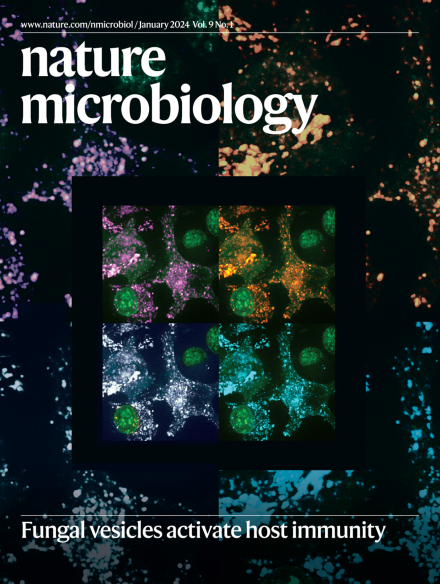Cross-neutralizing and potent human monoclonal antibodies against historical and emerging H5Nx influenza viruses.
IF 19.4
1区 生物学
Q1 MICROBIOLOGY
引用次数: 0
Abstract
Highly pathogenic avian influenza H5Nx viruses are an emerging threat for global health, especially clade 2.3.4.4b H5N1 virus which causes panzootic infections. Here we describe the isolation and characterization of broadly cross-neutralizing monoclonal antibodies (mAbs) against diverse H5Nx viruses from individuals who received a monovalent H5N1 vaccine 15 years ago. By screening over 500 mAbs, we identified 5 mAbs that neutralized the majority of H5 clades including 2.3.4.4b and target three distinct conserved epitopes within the HA globular head. Cryo-electron microscopy structures of these mAbs in complex with HA, deep mutational scanning and neutralization escape studies define the sites of vulnerability of H5 HA. These mAbs mediated stronger prophylactic protection against clade 2.3.4.4b H5N1 infection in mice than the best-in-class mAb targeting the HA stem. Our study identified several highly potent broadly neutralizing H5 mAbs from humans that either alone or in combination provide a pragmatic pandemic preparedness option against the threat of panzootic H5N1 influenza.抗历史和新出现的H5Nx流感病毒的交叉中和和强效人单克隆抗体。
高致病性禽流感H5Nx病毒是对全球卫生的新威胁,特别是2.3.4.4b进化支H5N1病毒,可引起流行性感染。在这里,我们描述了从15年前接种单价H5N1疫苗的个体中分离和鉴定抗多种H5Nx病毒的广泛交叉中和单克隆抗体(mab)。通过筛选超过500个单克隆抗体,我们鉴定出5个单克隆抗体,它们中和了包括2.3.4.4b在内的大多数H5分支,并靶向HA球形头部内三个不同的保守表位。这些单抗与HA复合物的低温电镜结构、深度突变扫描和中和逃逸研究确定了H5 HA的易损位点。这些单抗比针对HA干细胞的同类最佳单抗对小鼠的2.3.4.4b进化支H5N1感染具有更强的预防保护作用。我们的研究确定了几种来自人类的高效广泛中和的H5单克隆抗体,它们单独或联合使用为应对流行性H5N1流感的威胁提供了一种实用的大流行防范选择。
本文章由计算机程序翻译,如有差异,请以英文原文为准。
求助全文
约1分钟内获得全文
求助全文
来源期刊

Nature Microbiology
Immunology and Microbiology-Microbiology
CiteScore
44.40
自引率
1.10%
发文量
226
期刊介绍:
Nature Microbiology aims to cover a comprehensive range of topics related to microorganisms. This includes:
Evolution: The journal is interested in exploring the evolutionary aspects of microorganisms. This may include research on their genetic diversity, adaptation, and speciation over time.
Physiology and cell biology: Nature Microbiology seeks to understand the functions and characteristics of microorganisms at the cellular and physiological levels. This may involve studying their metabolism, growth patterns, and cellular processes.
Interactions: The journal focuses on the interactions microorganisms have with each other, as well as their interactions with hosts or the environment. This encompasses investigations into microbial communities, symbiotic relationships, and microbial responses to different environments.
Societal significance: Nature Microbiology recognizes the societal impact of microorganisms and welcomes studies that explore their practical applications. This may include research on microbial diseases, biotechnology, or environmental remediation.
In summary, Nature Microbiology is interested in research related to the evolution, physiology and cell biology of microorganisms, their interactions, and their societal relevance.
 求助内容:
求助内容: 应助结果提醒方式:
应助结果提醒方式:


